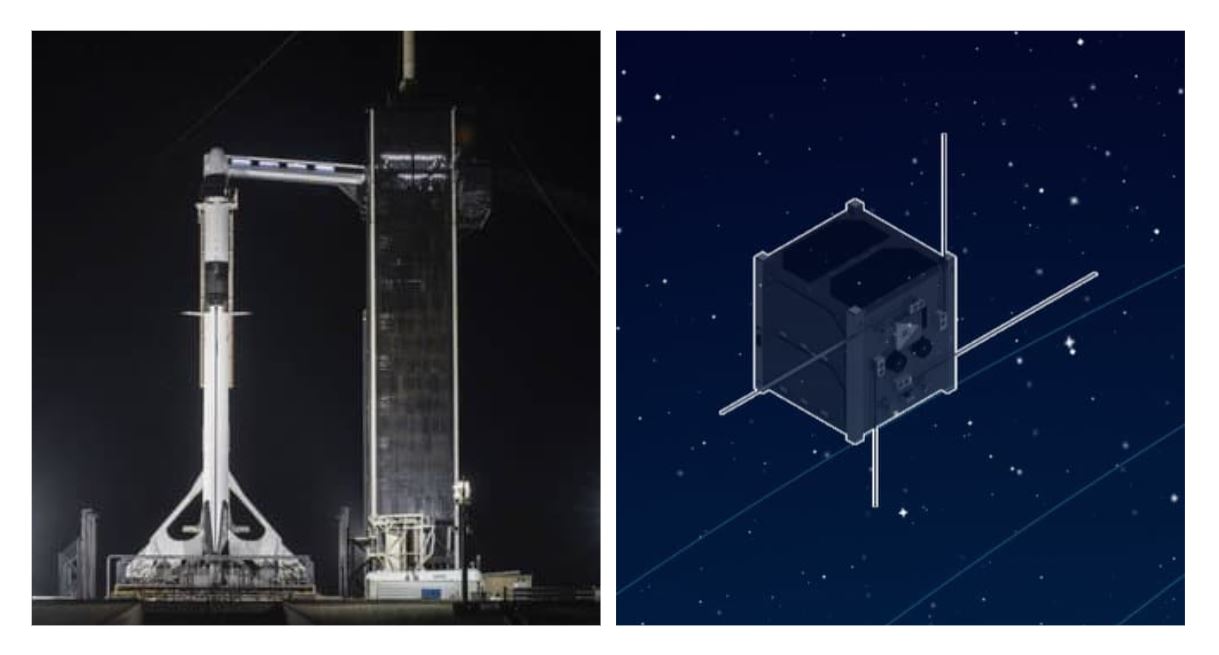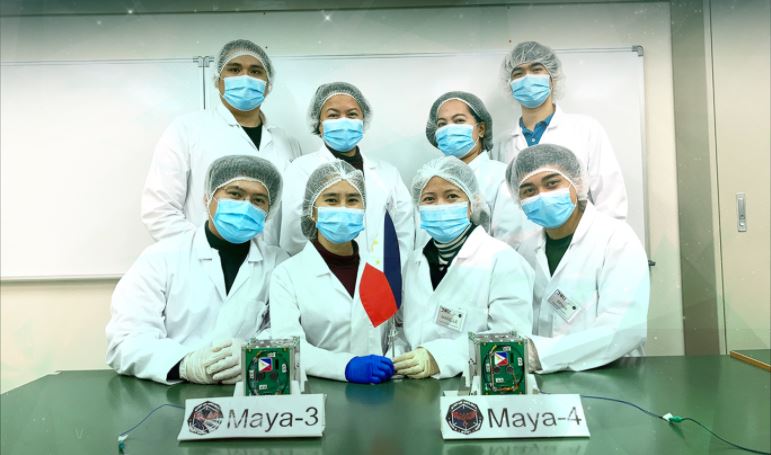
The Philippines’ first university-built satellites from the University of the Philippines Diliman (UP Diliman) are scheduled for launch to the International Space Station (ISS) from the National Aeronautics and Space Administration (NASA) Kennedy Space Center in Florida, USA, today, August 28, 2021.
The Maya-3 and Maya-4 Cube Satellites (CubeSats) to be launched are designed and developed by the first batch of Nanosatellite Engineering scholars under the Space Technology and Applications Mastery, Innovation, and Advancement (STAMINA4Space) Program at the UP Diliman Electrical and Electronics Engineering Institute (UPD-EEEI), namely, Renzo Wee, Christy Raterta, Lorilyn Daquioag, Derick Canceran, Judiel Reyes, Gladys Bajaro, Marielle Magbanua-Gregorio, and Bryan Custodio.
The two cube satellites were built under the STAMINA4Space Program with the assistance of the Space Science and Technology Proliferation through University Partnerships (STeP-UP), funded and supported by the Department of Science and Technology (DOST) with scholarship grants from its Science Education Institute (SEI). The STeP-UP Project is implemented by the University of the Philippines-Diliman in collaboration with the Kyushu Institute of Technology in Japan.
The STAMINA4Space report says that the CubeSats use the heritage bus of Maya-1 that was built as part of the Global Multi-Nation BIRDS Project.
Maya-1 completed its mission in 2020. Maya-2 started its space mission after the ISS deployment to orbit in March 2021. Both Maya-1 and Maya-2 were built by Filipino space engineers who are scholars at the Kyushu Institute of Technology (Kyutech) also under the STAMINA4Space Program.
The Maya-3 and Maya-4 CubeSats are mostly identical with the only difference in a mission, that is the Near-infrared camera is mounted only on the Maya-4 satellite.
The new CubeSats weigh 1.15kg each with stowed state dimensions of 10cm × 10cm × 11.35cm.

The University of the Philippines-built CubeSats have 7 missions to complete:
- Demonstration of image and video capture of RGB Camera using a 5MP commercial-off-the-shelf (COTS) RGB camera.
- Demonstration of Near-Infrared camera (NIR) – a repurposed RGB camera module, for Maya-4 cube satellite.
- COTS Automatic Packet Reporting System – Digipeater (APRS-DP) payload on CubeSat for technology demonstration. APRS-DP provides a digital message relay service to the amateur radio community by means of an onboard APRS digipeater. The APRS digipeater will receive from and digipeat an APRS message/packet to any licensed ham on footprint with APRS-capable handheld or station radio.
- Demonstration of ground data acquisition using Store and Forward (S&F) capability of the CubeSat. This allows the collection of data from remote ground sensors such as temperature, humidity, wind speed, etc., stores them onboard, and downloads them to STeP-UP ground stations.
- Detection of and protection from Single Event Latch-up (SEL) due to space radiation.
- Demonstration of a COTS Global Positioning System (GPS) module.
- Magnetic field measurement in space using an Anisotropic Magnetoresistance Sensor (AMR-MM).

The eight UP scholars started designing and building the CubeSats in 2019 and went through engineering model space environment qualification tests, and flight model functionality tests before being turned over to the Japan Aerospace Exploration Agency (JAXA) last April 28.
The UP-built CubeSats will be leaving Earth aboard a SpaceX Falcon 9 rocket in a Dragon C208 cargo as part of SpaceX Commercial Resupply Mission-23 (SpX-23) to the ISS on Saturday at 3:37 a.m. (3.37 p.m. Philippine Standard Time).
STAMINA4Space lists the ways to watch the live launch today here:
The live stream of the launch can be seen on NASA Live on YouTube at this link.
The Maya cube satellites follow the successes of the first Philippine-made microsatellites, the Diwata-1 and Diwata-2.
SEND CONGRATULATIONS in the comments below to the groups behind the Philippines’ 1st UP-built satellites set to be launched to the International Space Station today!
Good News Pilipinas is celebrating its 15th Anniversary in 2021 by giving away prizes! Subscribe to our Good News Pilipinas! TV YouTube channel and enter the raffle by sending us an email to editor@goodnewspilipinas.com
The post WATCH: Philippines’ 1st UP-built satellites launch to International Space Station appeared first on Good News Pilipinas.

0 Comments